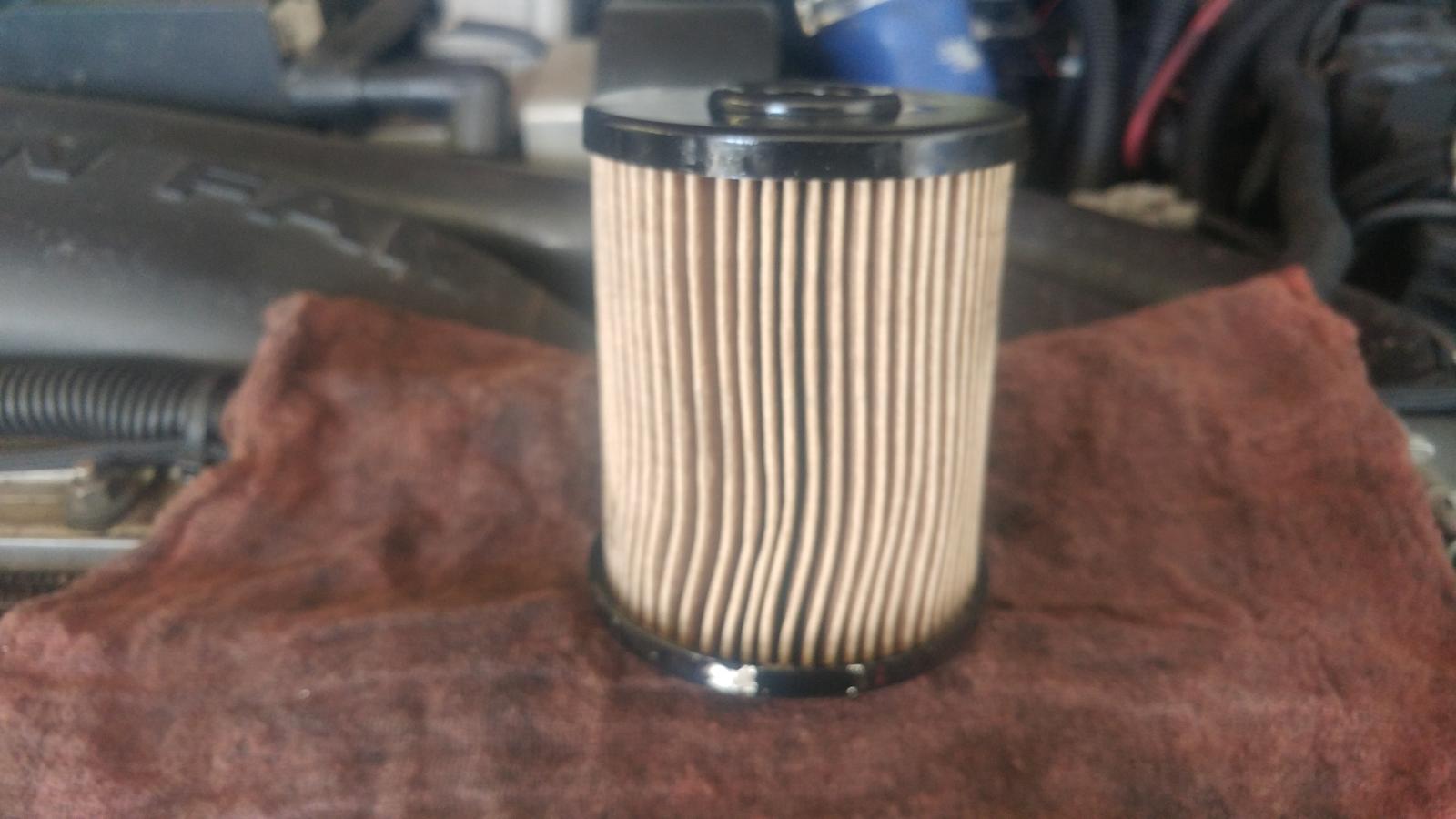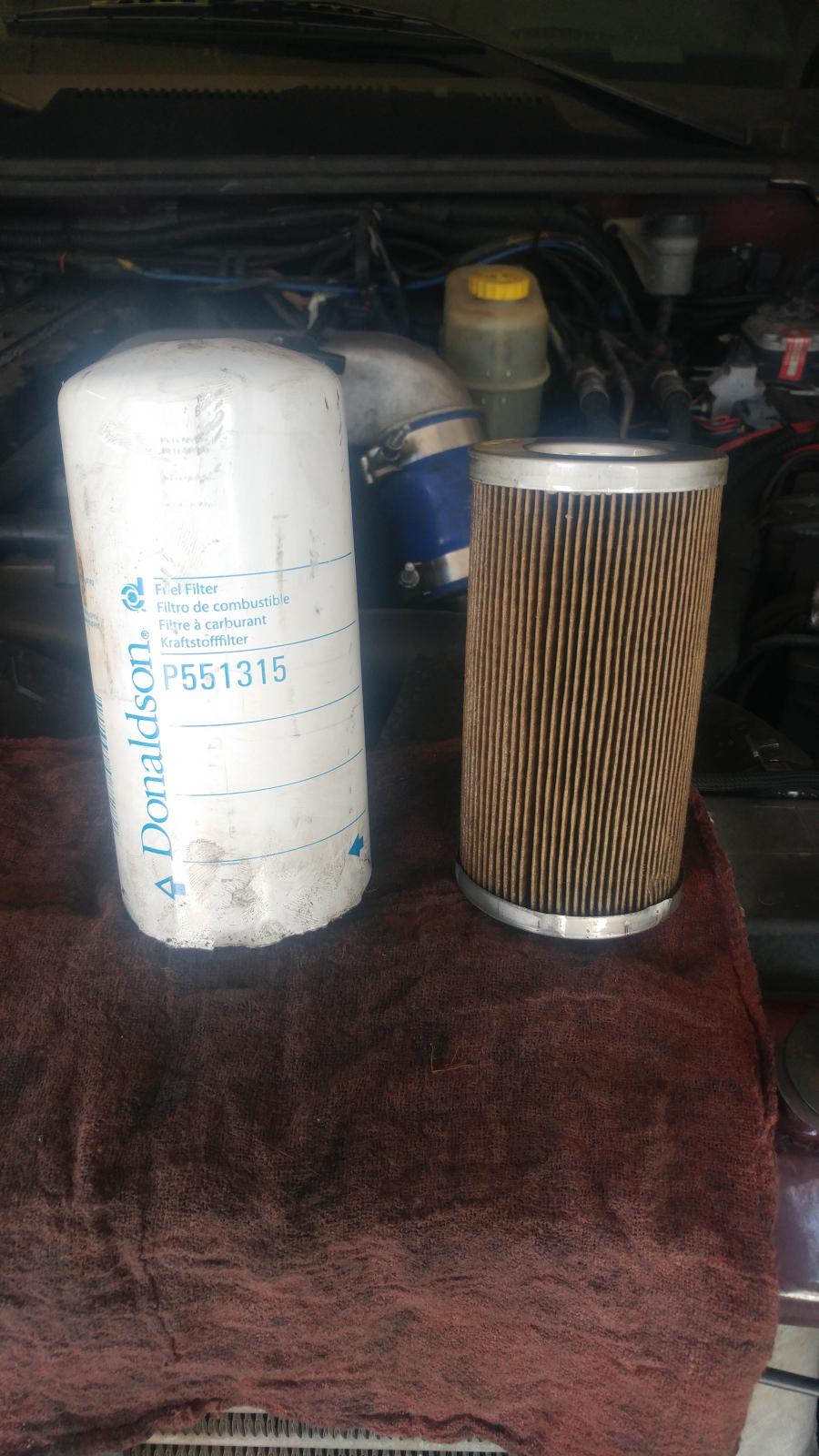
Everything posted by Mopar1973Man
-
30k miles on fuel filters
I changed them early at 30k miles. Yea I need to leave them in longer. I'm changing too early at 30k miles. Factory rate 15k miles is like fresh out the box yet. Running good ol' petroleum diesel. Mostly from Maverik Fuel Stations here on the west side.
-
Exterior Article - LED Lighting - Taillights and marker lights
Just select the normal front amber bulb then. https://www.superbrightleds.com/moreinfo/front-sidemarker-light-bulb/3156-3157-ck-led-bulb-dual-function-27-smd-led-tower-wedge-retrofit/3557/7522/?year=2002&make=22&model=1351&scc_id=1396 Here you go. https://www.superbrightleds.com/moreinfo/back-up-light-bulb/3156-3157-ck-led-bulb-dual-function-27-smd-led-tower-wedge-retrofit/3557/?year=2002&make=22&model=1351&scc_id=1427 Actually once outside in bright daylight not bad.
-
47rh shift logic
AC noise from the alternator affects all sensors with speed. Like tachometer, output speed sensor, ABS speed sensors, etc. The bad part is the only tool that can see the noise is o-scope.
-
47rh shift logic
Alternator noise issue possibly. Here is the fix for the 24V I'm not sure how it will pan out for the 12V.
-
1/2 vulcan draw straw 3
I highly suggest not to do a sump. If you do you take a huge risk at ruining a fuel tank there is already been a few members here done a sump and ended up replacing a fuel tank from leaking. Not to mention there are issues law wise about bottom draw tanks which may not be DOT legal. might be fine for the track but I do not suggest it on the highway. Not to mention more fuel line exposed to cold air blowing under the truck and greater chance of gelling up.
-
Quadzilla control pod
Ahh... Opps... Ok he need to upgrade..
-
Nv4500 atf+4??
That because New Venture went out of business after 124 years. There are very few cores left in the world so the core prices are even monster high. https://en.wikipedia.org/wiki/New_Venture_Gear More on the article of the shut down. https://www.syracuse.com/news/index.ssf/2012/08/new_process_gear_closes_this_w.html
-
Quadzilla control pod
Set the warmup mode temperature. Like I've got 170*F for this setting. Then you need to set the high idle delay time which I've got 15-second delay. Warning don't run the Quadzilla high idle with the factory high idle on the ECM enabled. If for chance the 3 CYL mode is kicked in while the Quadzilla running 6 CYL it will create a heck of a problem.
-
Bucking/surging issue
Sounds like it. This is one of the problems of "Canned Tuners" as you keep upgrading the truck with different turbos and injectors the canned tune no longer fits correctly. Just the mere fact of the injectors wearing out and pop pressure falling off will require adjustments to the tune to keep it running efficiently.
-
High Pitched "Cricket" Buzz
The play is most likely the pump. What you'll need to do is pull the belt and check the shaft play for the pump. If the pump is the problem make sure to flush the system BEFORE removing the old pump. This will flush the system of any debris before installing the new pump.
-
AirDog Toggle Switch hardware
Tap point -> Needle valve -> Snubber -> 5 to 7 feet of tubing -> Fuel pressure sensor.
-
LED lighting - Exterior lighting
Absolutely. Even on low the new Ford truck suck. Horridly bright and always in your face. Must be that Ford squatting problem.
-
Weird readings on quadzilla part 2:temperature boogaloo
If you figure from -40 to 204 That is 255 degree (have to count zero too) span which is exactly FF in hexadecimal. Strange though the OBDII port reports correctly all the way to 240*F. This is part of the CCD Network. Where the Quadzilla is on the ECM CANBus.
-
AirDog Toggle Switch hardware
Be aware... Now with mechanical gauges typically there is 5 to 7 feet of tubing between the tap point and the gauge. Now with electric gauges you need the same amount of tubing distance as well. A lot of people just screw the sensor directly into the tap point. This is wrong. You need to have that 5 to 7 feet of tubing yet this what allows the pulses to fade into the distances of the tubing. Still need a snubber too..
-
Vibration after Southbend Dual Disc Clutch installed
One of the few reasons I do my own mechanic work.
-
LED lighting - Exterior lighting
I deal with those every single day. More so in the big city areas more. Up here it mostly people get huge light bars with massive wattages and running them on the highway. Which is illegal to run cab top light bar on the highway.
-
LED lighting - Exterior lighting
There are two 100w spotlights on the rear axles. Eventually, get changed out for LED's as well. Might look at. That what you see on my truck. http://www.piaa.com/store/p/147-LP-530-Driving-LED-Light-Kit.aspx
-
CACA Bluetooth Stereo
There is a separate power lead. Black and red wire. Hook those up to the reverse lights. The red pigtails on the video RCA cable does nothing.
-
Big change in my life...
Not really I've been talking to folks trying to move into Ontario area and there is nothing affordable or available. This isn't an option. Being I could never get Mom to move down there she won't do it. Neither will I. This comes back around to find a person to do the training. The dialysis training is FREE it cost nothing but takes 8 hours a day, for 5 days a week for 2 months to complete. If you have a medical background this can be shortened. I've come close 4 times now. Sad the best one out of all them live right here in New Meadows, ID she is a retired EMT and plenty of medical knowledge but the day we were going to start training she found out she had cancer. Dang... I found the second one in Riggins, ID that was a nurse for the clinic and she did her husbands dialysis for over 7 years. The day we suppose to start training she informs me that she's moving to the south. Crap! Had the third one in Council, ID that works at McCall hospital. She opted for it but couldn't do the training without losing her job. If I could find the right girlfriend possibly I could get this filled in...
-
Speedometer Issues
Pull the speed sensor back out of the differential and using a mirror and flashlight look in the hole for the tone wheel. Is the tone wheel centered in the hole or off to one side? When the axles are turned is the tone wheel all there no missing chunks or missing teeth? Now you need to check the wiring from the sensor to the ABS module. With the plug pull on the sensor make a jumper wire between the two pins. Make sure the ignition is OFF. Now unplug the ABS module plugs and ohm out the rear sensor pins it should be 0 ohms but no more than 5 ohms. If all this checks out then you be sending your module off the ABS to someone to rebuild. There is Module Masters in Moscow, ID.
-
Searching for this emblem
I'll wait I've got a fresh grille that needs a new one...
-
LED lighting - Interior lighting
Full article is listed here now.
-
Interior Article - LED lighting - Interior Courtesy Lighting
LED Lighting - Courtesy Lighting Parts listing LED map light bulbs LED dome light bulb Dome light bulb install you need to carefully pry the driverside of the dome light lens downward. It will hinge on the passenger side. Simply pull the bulb and install the new bulb. If it doesn't light up turn it around 180 degrees and install again. Map lights you need to open the garage door panel. Inside there are two tabs and push to the opposite side and carefully pull the overhead panel downwards slightly to release the locks. Once you are done this it pulls rearward to release the panel from the rear side hooks. Be careful older panels might be brittle and easy to break. Now there is a plug you can disconnect the panel from the wiring. There is set of Phillips screws holding the lights in place. Once you remove each you can simply change the bulbs out. With the map light still released from the panel, you want to plug it in and test the blubs. If any of them don't light just turn them around 180 degrees. Before, stock OE lights After, Super Bright LEDs View full Cummins article
-
LED lighting - Interior Courtesy Lighting
LED Lighting - Courtesy Lighting Parts listing LED map light bulbs LED dome light bulb Dome light bulb install you need to carefully pry the driverside of the dome light lens downward. It will hinge on the passenger side. Simply pull the bulb and install the new bulb. If it doesn't light up turn it around 180 degrees and install again. Map lights you need to open the garage door panel. Inside there are two tabs and push to the opposite side and carefully pull the overhead panel downwards slightly to release the locks. Once you are done this it pulls rearward to release the panel from the rear side hooks. Be careful older panels might be brittle and easy to break. Now there is a plug you can disconnect the panel from the wiring. There is set of Phillips screws holding the lights in place. Once you remove each you can simply change the bulbs out. With the map light still released from the panel, you want to plug it in and test the blubs. If any of them don't light just turn them around 180 degrees. Before, stock OE lights After, Super Bright LEDs
-
Exterior Article - LED Lighting - Taillights and marker lights
LED Lighting Parts List LED marker light LED Taillight Heavy duty LED flasher As for installing it just simple change of parts. The flasher is found in your driver side of the dash. If the flasher been there a while then it might be difficult to remove. Just take your time and work the flasher it will come out. Pull the stock flasher out and plug in the new flasher. As for the taillights you need a T25 screwdriver. There are 2 screws holding each taillight in place. The outside edge is a set of pins into the body. Need to be firm but careful and pull the light straight out. Top bulbs are your tail lights simply twist the socket and it should come out. Simply change the bulbs out. Leave the bulb out of the taillight for testing. Front marker lights for stock marker there is a Phillips screw holding the light in place on the bottom. Then just pull forward. Twist the socket and remove. Now change out the bulb. Again leave the bulb out for testing. Aftermarket headlight you might have a unit like my own which the marker light is part of the headlight. This you'll need to remove the 3 10mm bolts and pull the headlight forward to gain access to the marker lights. After that, it is just like the stock marker light. Twist the socket to remove and change the bulb out. Now testing you want to simply turn on the parking lamps and see if the front marker lights are both white and the rear taillights are dim red. Now you can hit the hazards and check and see if the front marker lights turn amber and the rear taillight flash bright red. If any of the bulbs are backward pull them out and turn then 180 and resocket the bulb. This should fix this problem. As for the bulbs listed above, I'm using a switchback bulb in the front marker lights. This bulb will be white light on parking lamps and when a turn signal or hazards turn on the bulb automatically switches from white to amber. A member brought up laws might be in effect for white marker lamps in front. Might want to check with local laws on this. View full Cummins article







